The acclaimed cinematographer publishes his first monograph, a documentation of rural life in Devon shot over four decades
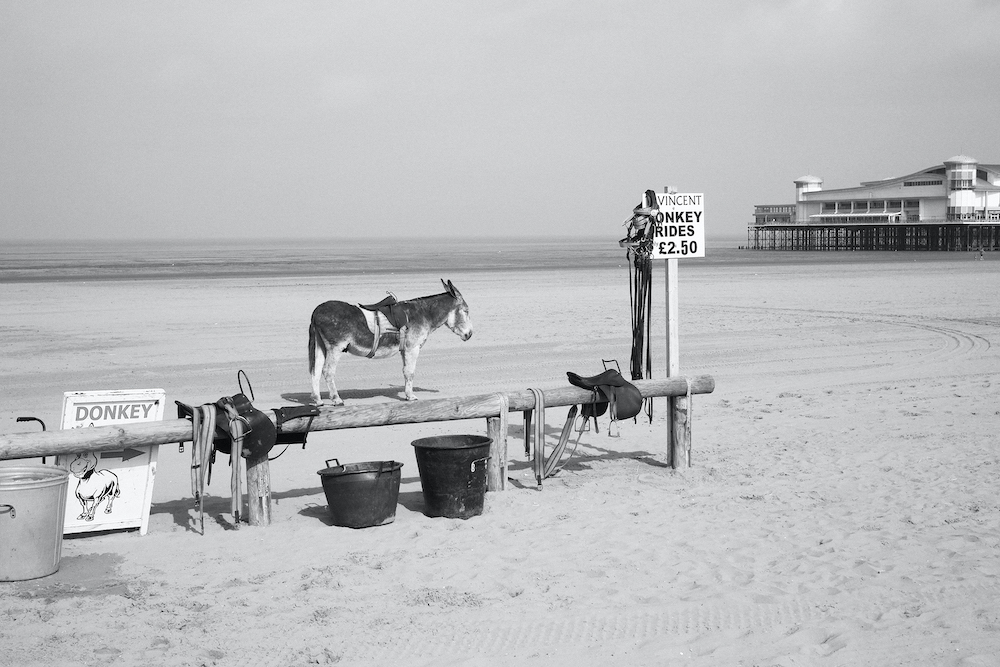
Roger Deakins needs little introduction. Revered for his cinematography work on films such as Sicario, The Shawshank Redemption, 1917, Fargo, No Country for Old Men and many (countless) more, he’s become a master of remarkable, boundary-pushing imagery. But how many know of his photography pursuits?
Perhaps an unsurprising pairing, Roger has spent a life documenting his surroundings in rural North Devon, which has now been compiled into his first monograph titled Byways, published by Damiani and featuring a collection of previously unseen, black and white still photography. Idly wandering with a camera in tow, Roger would find purpose in his solitary walks amongst the farms, trees and the nature-rich countryside, often returning again and again to the coastlines of Paignton, Teignmouth and Torquay – the latter a place in which he still calls home, despite mostly residing in Santa Monica with his wife and collaborator, James. Below, I chat to Roger to learn more about the relationship between both mediums, his love of the British seaside and why, in utter modesty, he still refuses to call himself as a photographer: “I just sometimes feel a bit embarrassed – these are just little images taken over the years.”
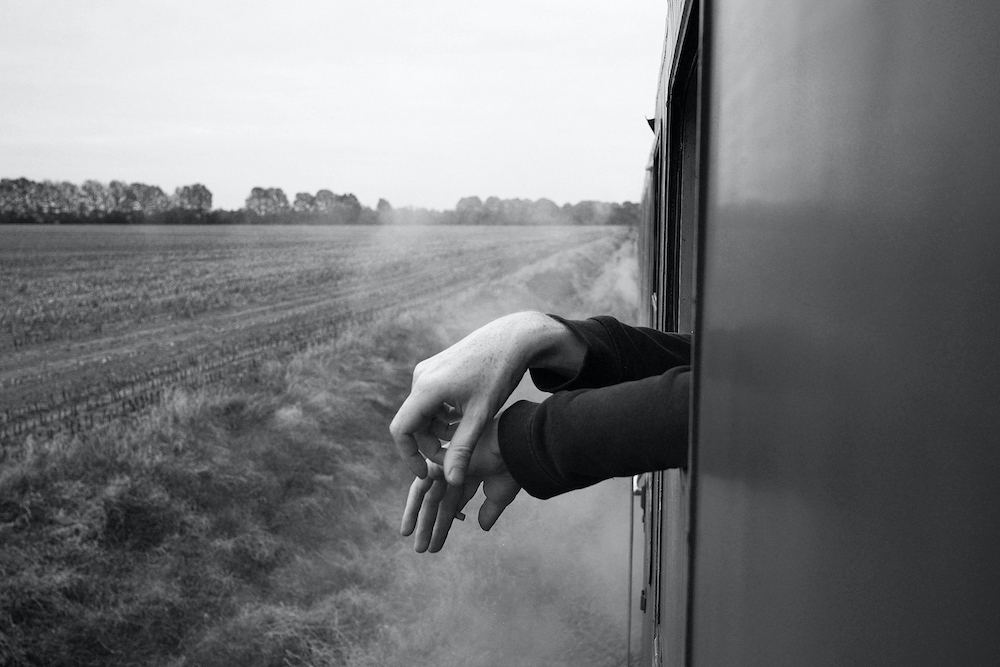
So what was it like growing up in Devon?
Frustrating. I mean, my childhood was mixed because I really love the outside – I love walking, I love fishing, and I loved that aspect of it as a kid – but I wasn’t happy. I wanted to get away, and I didn’t know what to do with my life. I didn’t have a clue.
I went to art college, which is probably what you do, or what you did back then, when you didn’t know what else to do. I then went to college at Corsham Bath Academy of Art, and that was probably the best decision for me. I didn’t get into the local Dartington College of Arts, and Bath was one of the last places open for applications. I was lucky to go there, and that’s where I discovered image making; I discovered photography.
Would you say that your rural upbringing in Devon had an influence on of your photography and film work?
I think your environment and upbringing moulds you to a very large extent. I am still that person. A couple of weeks ago, I was out in my boat in Torquay. I still go fishing and I still love the natural world; I love the way the light changes in Devon every 10 minutes. I’m not really a town person, which might seem odd seeing as we live in Santa Monica most of the time. But I love it here as well.
You found your feet once you attended art school, but what was it that sparked your initial interests in photography?
I love looking at photography books and painting – I used to paint a lot in school, and I love image making and movies. There was a little film society that I joined when I was in my early teens, but I didn’t connect that to anything that I could do to earn money. It wasn’t until I went to art college and met Roger Mayne, the great still photographer, and realised that maybe this is something I could do, and that there was a chance I could work like that too.
I started taking photographs, and a friend told me about the National Film School opening up. This was in 1970, and I applied thinking I wanted to make documentaries, because that was the kind of image making I was into. I got rejected that year, but I was lucky enough to get an assignment taking photographs in North Devon, recording country life. Then, I asked the principal of the National Film School why I had been rejected, and they said, well, if you apply next year, you’ll get in. They just wanted people with more experience of life for the first year of intake. So then I went to the National Film School.
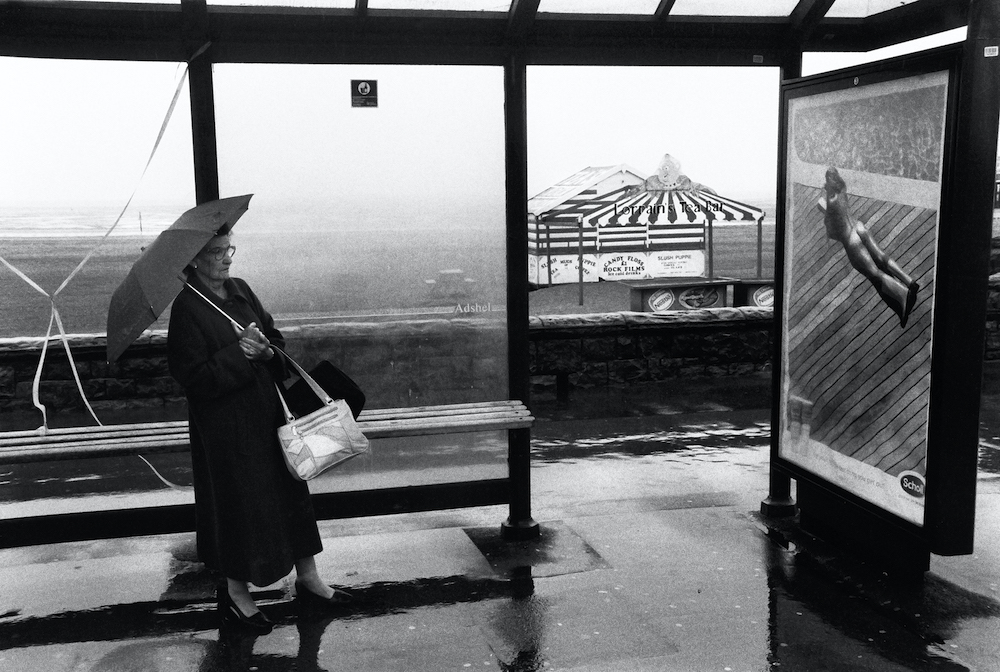
Film also seemed a lot harder to break into back then – the same for any kind of art career, really.
Even at college when you’re discussing your career, as you do when you’re leaving, I was laughed at for the idea of working as a photographer.
Did you ever have a backup plan, or was it always going to be photography and film?
Go back to Torquay and go fishing. I was pretty good at fishing.
I mean, if you’re from Devon…
You romanticise about things like that, but I might have done. I still have friends that I grew up with and that’s what they do. It’s quite a nice lifestyle.
In terms of the book itself, it’s interesting how you’ve written in the introduction that you’re not a still photographer, and that you won’t pretend to be one at this stage in your career. Why don’t you call yourself a still photographer?
The images, for me, are just sketches. I dreamt of being a still photographer, especially when I was at art college. That feeling of just wandering around with a camera and experiencing different parts of the world – it would have been wonderful. But I’ve never spent the time necessary to really develop. So the book is my sketches over the years, I suppose.
That’s quite a modest way of looking at it. What do you think grants someone the title of a photographer?
That’s true, but I don’t think it would be for me to say that I’m a photographer; I’m a cinematographer. I can accept that I am quite good as film cinematographer, and I’m worthy of that title. I look at some photographers that I worship and I wish I could do what they do.
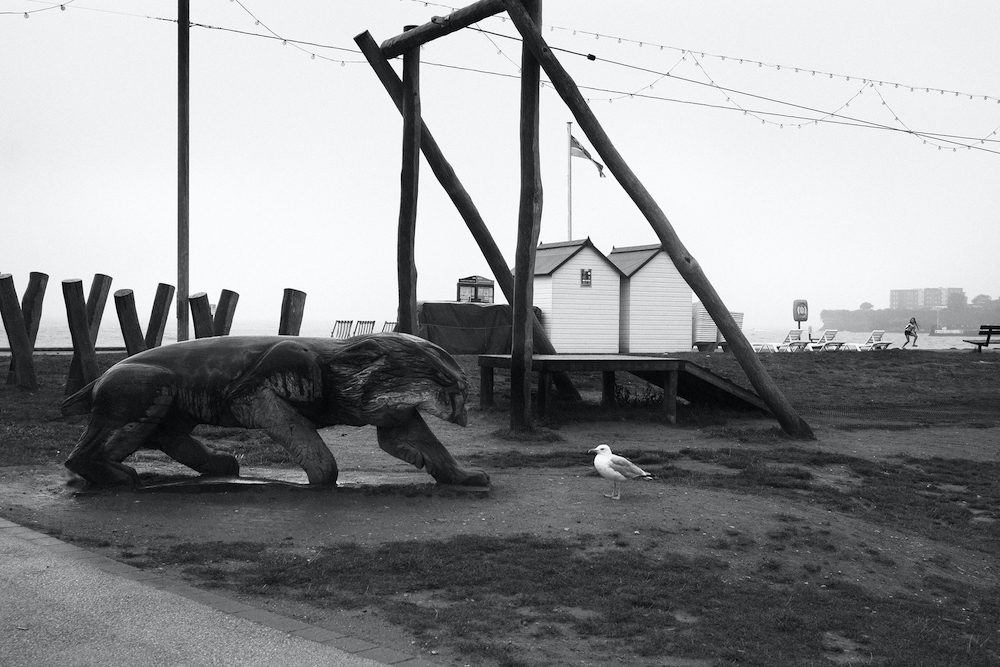
Why have you decided to share these pictures now?
You take photographs, and what do you do? Just put them in a cupboard and that’s it? A number of people have asked to see my still work, and have asked about publishing a book. So my wife, James, and I discussed it over a year ago now. And because of COVID, we had the time to really work on it.
I’d love to hear about your process while shooting – walking for hours with your camera at hand.
It’s just relaxation and I love exploring places. If I’m shooting a movie, I’ll go for a walk on the weekend, wandering around with no particular direction in mind. Sometimes I take photographs and other times I won’t. And I do the same in Devon now, I just like to go and wander around.
What would catch your eye?
It’s not really any one thing. I think that’s what the book shows, that it could be the tree on a cliff path that I pass every time I go for a run. Or it could be something simple like a statue, or I could be waiting and observing a situation where I want somebody to be in it. I usually want some sort of human element in the frame, and I wait for something to happen. I do that quite a bit; standing on a corner feeling a bit stupid waiting for something to happen.
It’s quite the patience game, isn’t it?
It can be, it’s very frustrating. Because sometimes you see something, and you miss it. And other times, you wait for something and it never happens. I’m quite often arriving somewhere to go for a walk, and I stop the car, I try and get a photograph and it’s too late.
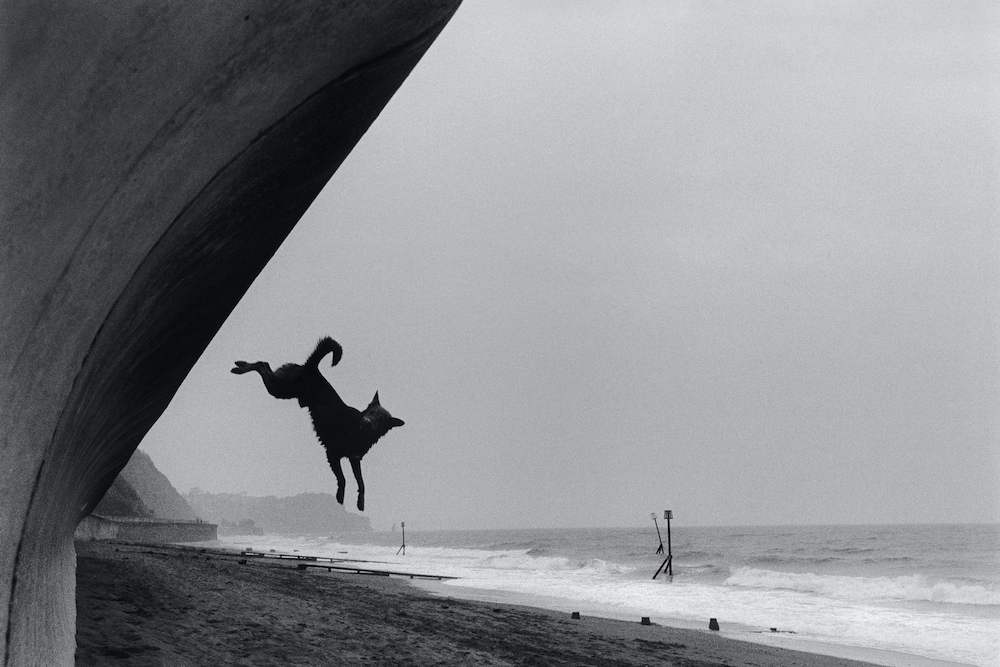
The coast plays a prominent role throughout the works, why so?
It’s where I was brought up and it’s where I live in Santa Monica – we’re not far from the beach. I would find it very hard to live away from the ocean. There’s something about walking on the beach and having that sense of space, and the changing light. I love the English seaside and I always intend on doing a series of photographs exclusively about the subject. But I’ve never got around to it. Maybe – luckily – I’ve always been too busy. Maybe the time will come.
The pictures tend to pose a lot of questions for the viewer, like the one of the dog jumping off the wall at Teignmouth beach . It makes you think, how did the dog jump off like that?
It’s funny – there was an owner throwing a stick off the promenade above. My wife and I were just walking on the beach, and then two dogs jumped after the stick, and I quickly took a photograph. I didn’t like the composition at first, as it wasn’t what I was hoping for. Then, one of the dogs took the stick and started running up the steps to the top of the promenade again, so I just changed my position hoping that there would be a second chance. The dog jumped over and, as it came down – because I was moving closer – it looked at me. I thought that was such a great thing, you know, the dog looking at the camera. I was very lucky to get that moment in the frame.
I love the eye contact.
Usually you’re trying to not have people conscious of you, but I don’t mind that. When I started photographing in North Devon, there was a number shots of somebody looking into the lens. And I’m not trying to be dishonest, I am standing there with a camera. So in one way or another – without getting into physics – I’m part of the whole. I’m influencing what’s happening.
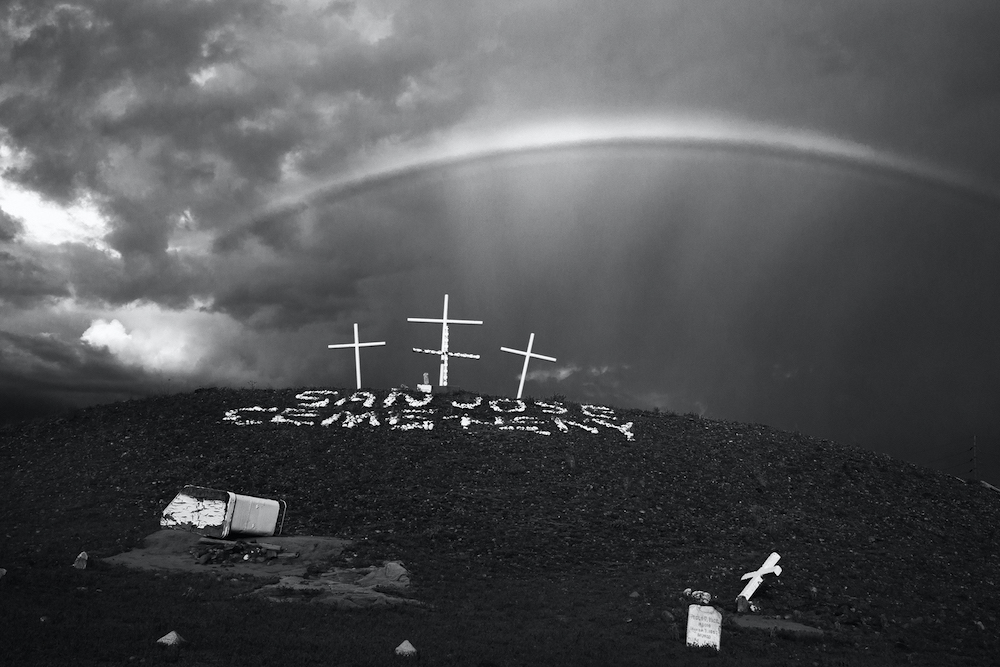
How has your relationship with photography changed over time?
I didn’t really do much still photography at all for years, I just concentrated on my film work. Once I got fairly established as a cinematographer, I started working more with the stills camera again. I like it more now than I have for many, many years. Even though I don’t take many photographs, it’s an excuse for me as much as anything to just get out and go for a walk.
Do you think you’ll work on a photography project in the future, or would it still be very much the case of snapping things, with no real intention?
That sounds more like me – just wondering around with no real intention. I really love the English seaside, so I’d love to spend more time with that. But then you really need to invest the time to do it justice. If I get a long period where I’m shooting a film or something, I might do that.
This book is a good place to start.
It’s nice that there’s been quite a lot of interest in it so far. I don’t know, I just sometimes feel a bit embarrassed because, as I said, I’m not a still photographer. These are just like little images taken over the years.
But this might change that…
Do you think I’ll get a job? Maybe it’s a new career, that would be kind of nice.
Roger Deakins’ Byways in published by Damiani in hardback at £45